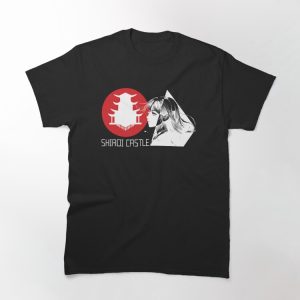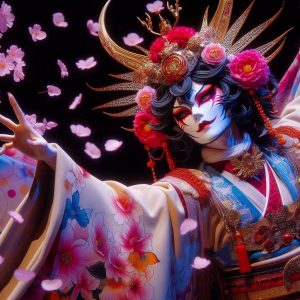Author: ShiroiYozora 04.09.2024
From Samurai Snack to Global Phenomenon: The Surprising History of Ramen
Contents
- 1 From Samurai Snack to Global Phenomenon: The Surprising History of Ramen
- 1.1 Slurping Through Time: The Unexpected Journey of Ramen
- 1.2 The Noodle That Crossed the Sea
- 1.3 The Rise of the Ramen Empire
- 1.4 Ramen in Pop Culture: From Bowl to Cool
- 1.5 Global Domination: Ramen Takes Over the World
- 1.6 The Future of Ramen: To Infinity and Beyond!
- 1.7 Conclusion: The Never-Ending Noodle
- 2 Other!
- 2.0.1 Other Interesting Things!
- 2.0.2 Blog Posts!
- 2.0.2.1 What is Japandi Style and Why is it Popular?
- 2.0.2.2 The Dark Side of Kawaii: Shocking Japan Statistics Nobody’s Talking About
- 2.0.2.3 From Bowing to Slurping: The Shocking Truth About Japanese Manners That Every Traveler Needs to Know
- 2.0.2.4 Forget Broadway, What is Kabuki and Why It’s the Next Big Thing in Entertainment
- 2.0.2.5 From Studio Ghibli to Sailor Moon: The Surprising Impact of Cats in Anime
- 2.0.2.6 From Samurai Snack to Global Phenomenon: The Surprising History of Ramen
- 2.0.2.7 The Legendary Katana: From Ancient Battlefields to Modern Screens
Slurping Through Time: The Unexpected Journey of Ramen
Picture this: You're sitting in your favorite anime-themed cafe, chopsticks poised over a steaming bowl of ramen. The noodles are perfectly curled, the broth is rich and fragrant, and you're about to embark on a culinary adventure that would make even Naruto jealous. But have you ever stopped to wonder how this humble bowl of noodles became a global sensation? Buckle up, ramen lovers, because we're about to take a deep dive into the brothy depths of ramen history!
This site contains affiliate links to products. We may receive a commission for purchases made through these links. Learn more.
The Noodle That Crossed the Sea
A Chinese Import with a Japanese Twist
Believe it or not, ramen wasn't born in Japan. Gasp! I know, it's like finding out Hello Kitty isn't actually a cat (true story, look it up). Ramen's ancestors actually hailed from China, where noodles have been a staple for thousands of years. But like many great things in life - karaoke, emoji, and let's not forget tentacle monsters - Japan took this Chinese import and made it uniquely their own.
In the late 19th century, Chinese immigrants brought their noodle-making skills to Japan. These noodles, called "shina soba" (Chinese soba), were the great-great-grandparents of modern ramen. They were like the first season of an anime - a bit rough around the edges, but full of potential.
Ramen's Identity Crisis
For a while, ramen suffered from a bit of an identity crisis. Was it Chinese? Was it Japanese? Was it the culinary equivalent of a confused exchange student? This ambiguity actually worked in ramen's favor during World War II. While many foods were rationed, ramen flew under the radar because it wasn't considered a "Japanese" food. Sneaky noodles!
The Rise of the Ramen Empire
Post-War Noodle Boom
After World War II, Japan was in rebuilding mode, and what better way to fuel a nation than with cheap, filling noodles? Ramen stands popped up faster than Pokémon evolving, offering quick, affordable meals to hungry workers. It was like the food equivalent of a power-up in Mario Kart.
Momofuku Ando: The Instant Ramen Revolution
In 1958, a man named Momofuku Ando changed the game forever. No, he didn't invent a new jutsu or summon a ramen-breathing dragon. He did something even more miraculous - he invented instant ramen. Suddenly, college students around the world had a new favorite midnight snack, and a way to survive on a budget that would make even the stingiest anime parent proud.
"Momofuku Ando didn't just invent instant noodles, he invented a lifestyle. A broke, sodium-filled lifestyle, but a lifestyle nonetheless."
Ramen Goes Gourmet
As Japan's economy boomed in the following decades, ramen evolved from a cheap street food to a culinary art form. Chefs began experimenting with different broths, toppings, and noodle types. It was like ramen went through a training arc and came out with new superpowers. Tonkotsu, shoyu, miso, shio - each type of ramen became a character in its own right, with loyal fans arguing over which was the true protagonist.
Ramen in Pop Culture: From Bowl to Cool
Anime's Noodle Obsession
If you've watched any anime, you know that characters are always slurping down bowls of ramen with the enthusiasm of a shonen hero powering up for a final battle. From Naruto's obsession with Ichiraku Ramen to the mouth-watering depictions in "Tampopo," ramen has become as much a part of anime culture as giant robots and improbable hairstyles.
- Naruto's ramen addiction is so intense, it's practically a supporting character
- The ramen-eating scenes in Ghibli films are more detailed than some countries' constitutions
- If anime characters ate as much ramen in real life as they do on screen, Japan would have a serious noodle shortage
Ramen Museums: Because Why Not?
Japan, in its infinite wisdom, decided that ramen deserved not just to be eaten, but to be studied and revered. Enter the ramen museums. Yes, that's plural. There's more than one museum dedicated to ramen. It's like Disneyland for noodle nerds, complete with replica ramen shops from different eras and enough broth samples to make you float away.
Global Domination: Ramen Takes Over the World
America's Ramen Renaissance
In the early 2000s, ramen made its way to the hipster havens of New York and LA. Suddenly, it wasn't just about instant noodles anymore. Gourmet ramen shops started popping up like Studio Ghibli spirits, each with its own twist on the classic dish. Truffle oil in ramen? Sure! Cheese? Why not! It was like watching ramen go Super Saiyan.
Ramen Goes Viral
In the age of Instagram, ramen has become a social media star. People queue for hours to try the latest ramen sensation, armed with phones to capture that perfect "noodle pull" shot. It's gotten so intense that some ramen shops have had to ban photography. Imagine explaining to your ancestors that one day, people would be taking pictures of their food instead of eating it. They'd think you were crazier than a Studio Gainax ending.
The Future of Ramen: To Infinity and Beyond!
Ramen in Space?
As we look to the future, one can't help but wonder: what's next for ramen? Will we see zero-gravity ramen for space tourists? Ramen-flavored energy drinks for gamers who can't be bothered to use chopsticks? The possibilities are as endless as the varieties of Kit Kat in Japan.
Sustainable Slurping
With growing concerns about sustainability, ramen shops are starting to focus on eco-friendly practices. Plant-based broths, locally-sourced ingredients, and biodegradable packaging are becoming more common. It's like ramen is going through its own environmentally conscious story arc.
Conclusion: The Never-Ending Noodle
From its humble beginnings as a Chinese import to its current status as a global culinary icon, ramen has come a long way. It's weathered wars, survived economic ups and downs, and even made the leap from 2D to 3D (we're looking at you, anime-themed ramen cafes).
So the next time you're slurping down a bowl of ramen, whether it's a gourmet creation from a Michelin-starred chef or a late-night instant noodle feast, take a moment to appreciate the rich history in your bowl. And remember, in the immortal words of a certain ninja: "Dattebayo!" Which, loosely translated, means "Believe it!" Or in this case, "Believe in the power of ramen!"
"In the grand tapestry of culinary history, ramen might just be the thread that ties us all together. A delicious, slurp-able thread."
Now, if you'll excuse me, all this talk of ramen has made me hungry. I'm off to indulge in a bowl that would make even the pickiest anime protagonist proud. Remember, life is like a bowl of ramen - it's all about finding the right balance of flavors, and sometimes, you just need to dive in and enjoy the mess. Slurp on, ramen lovers!
Check out our article featuring the top Japanese cookbooks.
Get some instant ramen from Amazon!
Go back button!
Other!
Other Interesting Things!
Blog Posts!
Shiroi Castle is a participant in the Amazon Services LLC Associates Program, an affiliate advertising program designed to provide a means for sites to earn advertising fees by advertising and linking to Amazon.com. Amazon, the Amazon logo, AmazonSupply, and the AmazonSupply logo are trademarks of Amazon.com, Inc., or its affiliates.
Some of the graphics used to design the website has been created by Freepik www.freepik.com, using Adobe Firefly AI or Microsoft Designer.


















